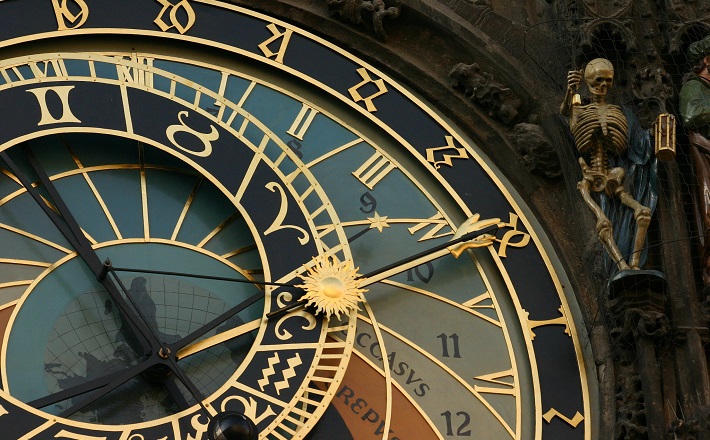Commentary on Isaiah 2:1-5
Isaiah prophesies to a word seen, rather than heard. Preacher, this week, and as many weeks as you spend in Isaiah this season, do your best to preach for the eye rather than the ear.
A word seen and the world seen anew
The prophet’s language is vivid and colorful, in fact, heart-breakingly so. Preachers following Isaiah’s path to Christmas best follow suit, imaging with your words a world of justice and righteousness that is tangible but not fully grasped. Preachers following Isaiah’s path must also use vivid language about the ways in which we tragically fall short of God’s dream for creation.
This is no ordinary seeing. The author’s choice of the verb haza elevates the seeing to spiritual height and depth—prophetic vision—rather than simply seeing physically (the Hebrew word being ra’a for this seeing). Isaiah beheld the word, and so saw the world in an extraordinary way.
The opening phrase “the vision of Isaiah” (the noun hazon from the Hebrew haza) is a bit unusual. More frequently, the headings and openings of prophetic books reads “the words” or “the word” according-to-such-and-such a prophet.1 But Isaiah is relaying a vision for Jerusalem/Zion in three stages: destruction and exile (first Isaiah), expectation of the new thing (second Isaiah), and a just reorganization of the new thing (third Isaiah).
Prophet on the inside
While the Book of Isaiah is critically curated content spanning generations of prophets who see themselves in the tradition of Isaiah, our text today is believed to be from the historical Isaiah, first Isaiah, son of Amoz, who lived during the reigns of King Uzziah to King Hezekiah in Judah (the second half of the eighth century through the beginning of the seventh century). His partner in life was a prophetess (Isaiah 8:3) and together they had several children.
Isaiah is a Jerusalem insider rather than the ragged prophet on the outskirts of town. He may even be a court prophet, not unlike the prophet Nathan was to King David.2 Like Nathan, Isaiah spoke as an “independent voice, criticizing as well as supporting the political and religious establishment in Jerusalem.”3
Judgment and hope
Our lections for Advent focus on hopeful visioning and edit out the judgement that runs alongside Isaiah’s dreams for Jerusalem/Zion. It is always tempting, especially in the joy of Christmas, to steer clear of judgy preaching. But I do wonder how effective our preaching toward a new way of life can be without naming the errors that will be our downfall as members of the kin-dom of God?
Judgment and vision go hand in hand. In order to say yes to the vision of Isaiah in our lection, the vision of death-dealing weapons being melted and reformed into life-giving agricultural tools, preachers will have to say no to guns in a climate that is hostile to such a breach of American liberties.
Preaching about guns and war during Christmas? We want to keep people in the pews this time of year, not send them away! We want to be comfortable and warmed by the Gospel, not burned by it!
I am not sure the scripture offers much wiggle room for timid and tepid preaching about our state of affairs. Perhaps a fitting song to be sung alongside the vivid longings of “O Come, O Come, Emmanuel,” is “War is Over! (if you want it)” from John Lennon and Yoko Ono.
But do we, the Church, want an end to war and the things that make for war? Does our society want to stop profiting from the War Machine? Do we really have to go here so close to Christmas?
I think so, brave preacher. In order to say yes to the vision of this text and others to come in Advent, we will need to say no to something(s).
Sermon images
For each of my Isaiah commentaries, I will share an image that conjures sermonic depth for preacher and people. This week’s image is “Let us Beat Swords into Plowshares,” a sculpture in New York City’s United Nations north garden area. The sculpture was a gift from the Soviet Union by artist Yevgeny Vuchetich in 1959.4
The image of swords beaten into plowshares is powerful enough to be invoked in popular culture, from Michael Jackson’s “Heal the World” to the finale of Les Misérables. Can we not only invoke the image of shalom in general, but provoke the imaging of Isaiah’s vision in our context today? It is happening after all. Take, for example, creative activist Pedro Reyes in Culiacán, Mexico. Culiacán is “the city with the highest rate of gun deaths in the nation.” In response, Reyes has collected 1,527 guns for the project Palas por Pistolas, melting these guns down into 1,527 shovel heads. But the project hasn’t stopped there. The 1,527 shovels are being used to plant 1,527 trees in the city.5 Matter used for death transformed into matter promoting life. It doesn’t get much more biblical than that.
As we move this Sunday from a celebration of Christ’s reality and return as the Ruler over all to the recalling of Christ’s first arrival as a vulnerable infant, we must name the tension: there is no chance for God to make things new without judgment upon the old things that make for destruction.6
So, embrace Advent this year before embracing Christmas. Embrace the agony of laboring for new life to be born in your life, the life of your congregation, and the life of the world.
Notes:
John H. Hayes and Stuart A. Irvine. Isaiah: The 8th Century Prophet: His Times and His Preaching (Nashville: Abingdon Press, 1987), 67.
Michael D. Coogan. The Old Testament: A Historical and Literary Introduction to the Hebrew Scriptures (New York: Oxford University Press, 2006), 333.
Coogan, 333.
Vuchetich, Evgeniy Viktorovich, 1908-1974. Let Us Beat Our Swords into Plowshares, from Art in the Christian Tradition, a project of the Vanderbilt Divinity Library, Nashville, TN. http://diglib.library.vanderbilt.edu/act-imagelink.pl?RC=54228 [retrieved October 10, 2019]. Original source: http://www.flickr.com /photos/un_photo/3311538833/.
Amanda Froelich, “Mexican artist melts 1,527 guns, makes shovels to plant trees,” pocho.com.
http://www.pocho.com/chilango-artist-melts-1527-guns-makes-shovels-to-plant-trees/?fbclid=IwAR0HOASU423v6Aj39ao38XrLipvtRoV-FtKY8LsD5V33rCPMEz3ZkAhWN4EWalter Brueggemann. An Introduction to the Old Testament: The Canon and Christian Imagination (Louisville, KY: Westminster John Knox Press, 2003), 161.


December 1, 2019